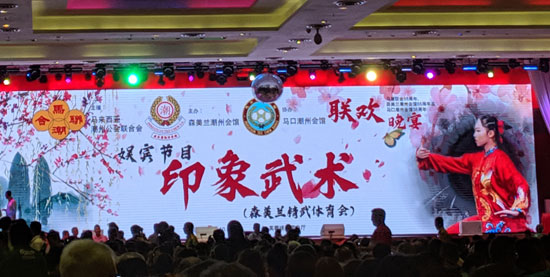China’s miraculous growth through the eyes of overseas Chinese
By Ernest Yap | chinadaily.com.cn | Updated: 2019-09-29 15:07

From dilapidated mud huts to concrete high-rise public housings, from rural dirt roads to paved highway, from rudimentary health clinic to squeaky clean, well run regional hospital, it seems these changes have taken place in a time warp. Under the yoke of wars as an impoverished country during the early 20th century, it has grown to a middle income nation today with hundreds of millions of people being lifted out of extreme poverty under vigorous government campaign.
It is a totally different scene nowadays: daily staples, meats, vegetables, consumables are in abundant supply, on display on the supermarket shelves and on the street side markets. Domestic and international companies have, and still are, set up offices and plants to capture the rising purchasing power of modern-day Chinese consumers. These economic paradigm changes have come a long way when the People's Republic of China government was established in 1949 and set in place its social welfare policies. Rigorous economic and social programs were drawn up with the peoples’ welfare as the priorities, to enable its citizens live with decent basics daily necessity as part of universal, fundamental human rights. The historical, Herculean social and development changes to date were amazing and encouraging, and as close to a miracle as any contemporary government can strive for. The changes were well planned and effectively, efficiently implemented. The nation's economic watershed moment came in 1979, when the country’s top leaders decided to swing open its economic doors to the world to quicken its modernization marathon, and to catch up with the rest of the world.
China’s pace of miraculous economic transformation took another leap in 2001 when China became a member of the World Trade Organization. It engages multilateral, multifaceted trade and commerce with the rest of the world. China economic marathon runner has not looked back since: stride by stride, yard by yard planting her feet firmly on the world track with vigor, while still focusing her eyes on the prize to end hunger, eradicate extreme poverty in the inner rural regions, to build a world-class infrastructure and smart cities; and to educate, prepare its workforce for the future.
I know many Chinese intellectuals who graduated from US universities in the 90s and decided to return to China to help develop the country in their areas of expertise. China’s Western educated, trained workers are a positive reflection of professionalism, transparency, integrity, business laws adherence practices that have been incorporated into modern China business management. China’s growth and modernization is closely linked to its people, intellectuals and the overseas Chinese diaspora. It is through this pool of human resources, talents, hard work across all socio-economic strata and backgrounds that help build China to where it is today. And the amazing fact is: its speed and growth still hasn’t stopped.
China has not only invested in its infrastructure. It has also placed meeting the urban and rural citizenry social needs, in areas such as quality education, public health care accessibility and gender equality. China development policy is done with its common folks interest at heart, free from special interest groups influences. As such, in addition to some of the glitziest, glamorous, neon light skyscrapers that many outsiders came to know well, it has achieved some of the world's fastest literacy rates, poverty reduction, affordable international standards health care, and institutionalized female equal rights protection and gender empowerment. According to the Institute for Security and Development policy, about 730 million people have been lifted out of poverty in the last 40 years: unparalleled in modern history. Those who benefited most from these programs were the females and children.
As China prospers, so does its cross-country people-to-people interactions and inter connectivity with the rest of the world. Adopting a shared prosperity principle, and through regional economic cooperation, this nation seeks to build closer links with its global village neighbors to facilitate international trade, and people movement across the Asian-European continents. Soon one day, through the regional infrastructure connectivity initiative, one can starts journey from the southernmost tip of Asia continent near Tanjung Piai, Malaysia, just north of the Equator, and travel northwards by continuous rail line to the central plains of China. From here, one can travel eastward by rail through the Korea Peninsula, and perhaps one day, across the straits to southern Japan; or even to Taiwan, China,. These are possible dreams when peaceful co-existence and prosperity permeates the region. Not surprisingly, current China rail network already has freight train traversing from central plains westward to Central Asia, Eastern Europe and finally Western Europe. China coordinated investment in contiguous inland freight rail to far corners of Asian and European continents reflects the realization in opening up the economic potential of those countries that are along this rail corridor. It has slowly but surely galvanized regional, intercontinental trade and business activities.
Famine, civil strife, warlord-ism are long gone. In its place, the government has put in place wide-ranging social safety net for all. China’s modern era social and developmental growth story is truly an encouraging one. China's government has been unceasing in its social and developmental campaign with a focus on serving, enriching its people. The positive impacts of China overall growth will continue to reverberate throughout the country in decades to come.
The author is an environment engineer who is active in making a better world.
The opinions expressed here are those of the writer and do not represent the views of China Daily and China Daily website.
























